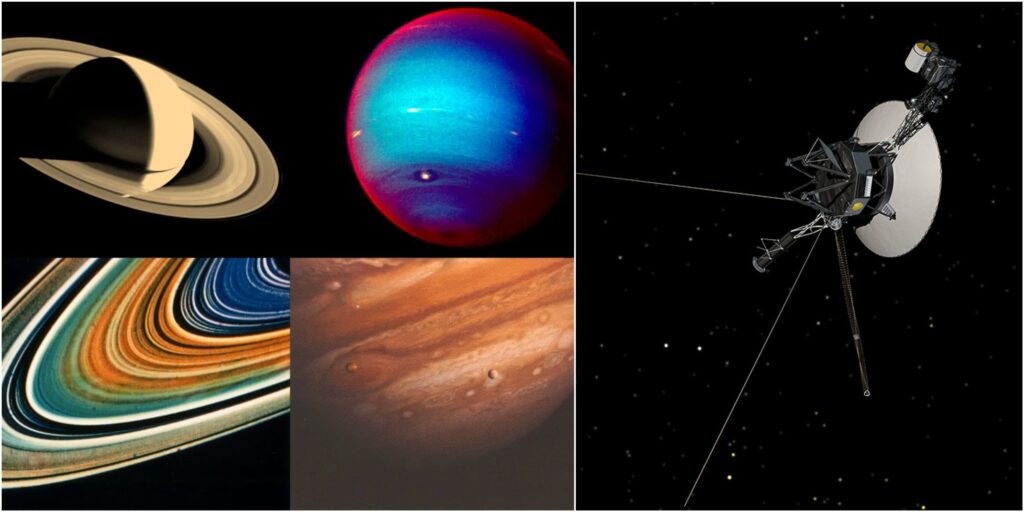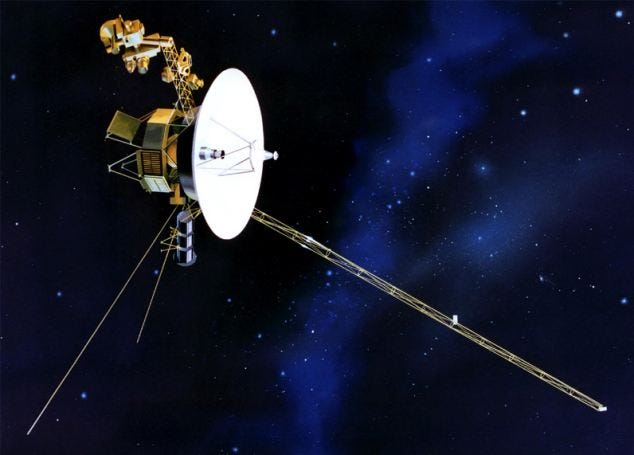- NASA engineers may have found a clever trick to bring Voyager 1 back from the brink.
- The probe, showing its age, has been sending back garbled data since November.
- Engineers sent a "poke" to the ancient probe and received a surprising response.
Voyager 1 has taken to improvising in its old age, and it's making it very difficult to understand what it has to say.
The probe has been sending back a steady flow of gibberish since November, worrying scientists who are trying to capture the final slivers of information from the 46-year-old spacecraft.
Undeterred, NASA engineers have been working to rescue the data. A "poke" sent to Voyager 1's internal systems on March 3 may have brought it back from the brink, NASA announced on Wednesday.
NASA engineers spotted an unusual set of data in the signal sent back in response to their prompt. This may hold the key to deciphering the spacecraft's cryptic signal, the agency said.

The Voyager 1 and 2 probes have been feeding data about our universe since the late 70s when they were first launched.
They remain marvels of engineering — no one expected them to survive longer than five years. But they have continued to send back information about the cosmos, exceeding their lifespan more than nine times over.
Today, Voyager 1 and 2 hold a unique position in space exploration history as the only spacecraft to have ventured into interstellar space. They are more than 10 billion miles away from Earth and getting farther every day.
While their instruments are feeling the weight of their age, NASA has managed to continue squeezing information out of the spacecraft with clever engineering tricks.
This approach has provided an unprecedented glimpse into what happens beyond the sun's reach.
"That's what's most important is keeping these spacecraft operating as long as possible," Suzanne Dodd, NASA's project manager for Voyager, recently told Business Insider.
The glitch in Voyager 1 data is hardly unexpected. It is only the latest in a series of issues in the probes' systems NASA has had to tackle. Experts have been concerned the repeat malfunctions are signs they are entering the last moments of their functional life.
NASA, however, appears to have found a solution. Engineers knew Voyager 1's issue seemed to lie with one of three onboard computers that package the probe's data before it is sent to Earth — the flight data subsystem or FDS.
The March 3 ping to the FDS returned a mostly muddled signal, but it contained some data that "differed from the rest of the computer's unreadable data stream."
One NASA engineer managed to decode this precious signal, unlocking a "read-out" of the FDS's memory that contains instructions and variables the engineers can use to understand what went wrong.
This doesn't mean all is saved.
"The team is analyzing the readout. Using that information to devise a potential solution and attempt to put it into action will take time," said NASA.
Regardless of what happens, the probes' final missions will continue.
Even when they can no longer communicate with Earth, Voyager 1 and 2 will continue to drift through the galaxy carrying golden records carrying information about humanity.
The hope is that these could act as interstellar messages for potential intelligent life that may intercept the iconic spacecraft.
